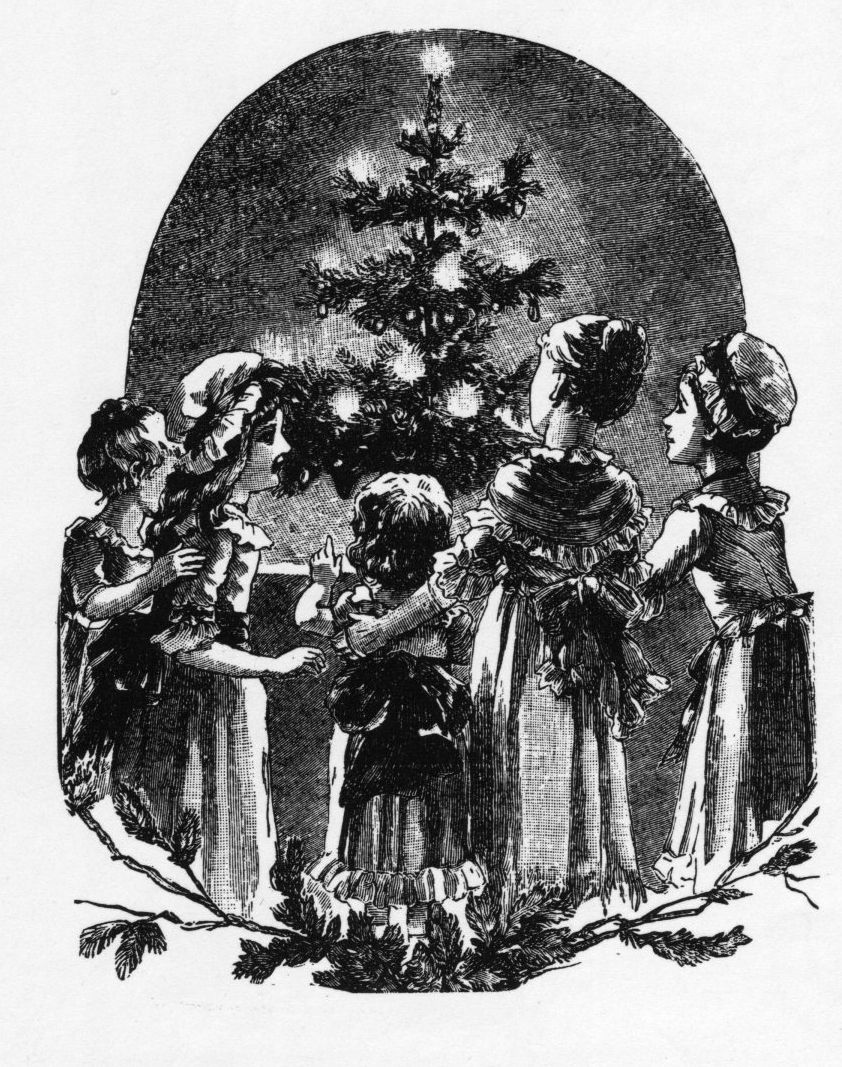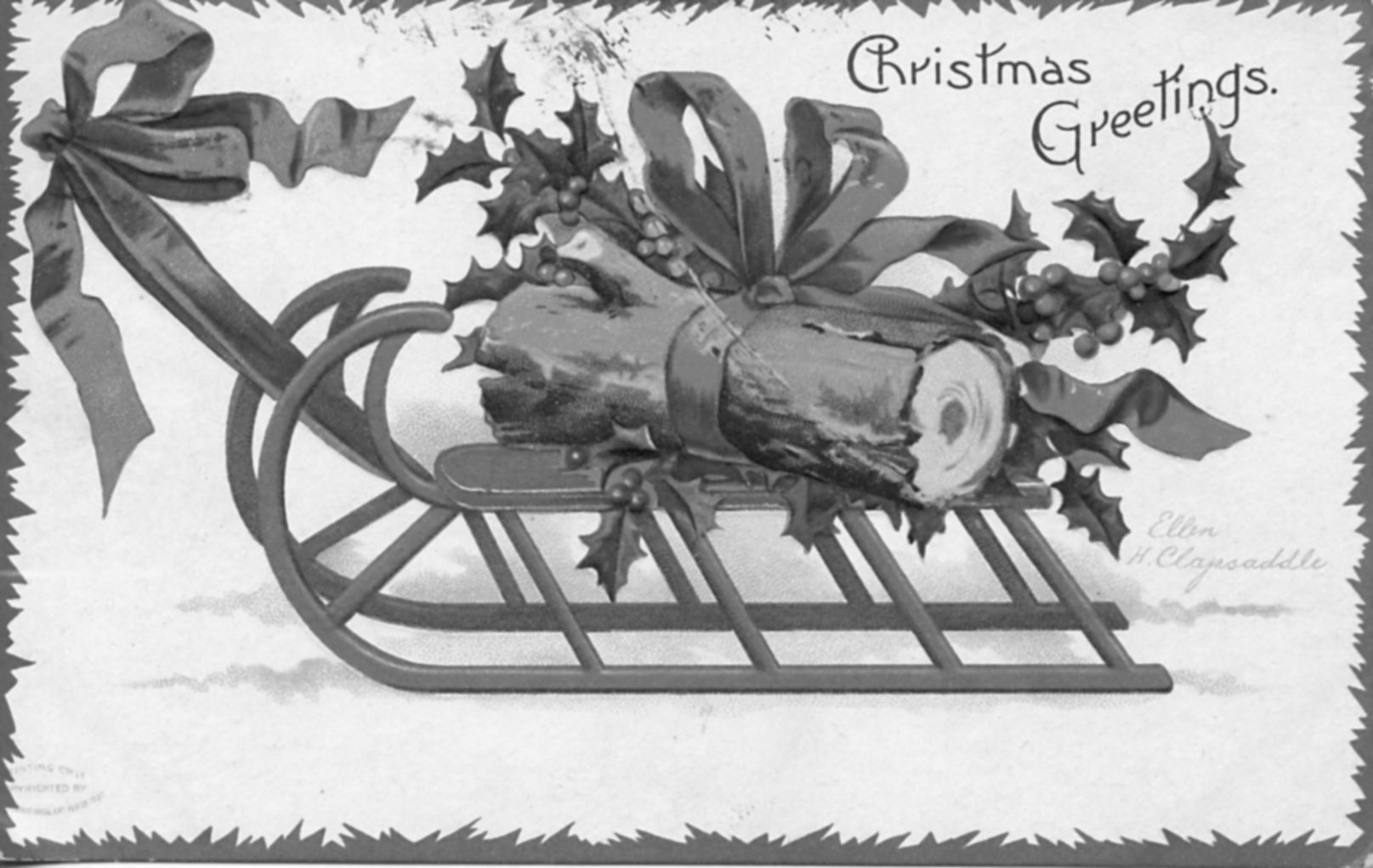
Christmastime in Pennsylvania is an old-fashioned, time-honored tradition. It has evolved considerably, however, since the first settlers cleared the land in Penn’s Woods in the seventeenth century.
Because of the generosity of William Penn, colonists of several varied nations and religious creeds flocked into the colony of Pennsylvania. Depending on the region, the manner of celebrating the holiday differed from one county to the next.
The Quakers, the sect to which William Penn belonged, did not celebrate Christmas at all. Like the Pilgrims of Massachusetts and the Calvinists from Scotland who settled farther west in Pennsylvania, they believed that Jesus Christ was not born on December 25. They considered the commemoration a pagan holiday, and treated Christmas Day like any other day of the week. Because of their benevolent nature, Quakers did not mind if others celebrated the day. The Lutherans, Presbyterians, Catholics, British, Irish, Swedes and Germans all wished to be part of the festive holiday.1

A depiction of an early 19th century Christmas tree
South central Pennsylvania is an interesting mix of many cultures, and their holiday celebrations were as diverse as the nations of their births.
The first public Christmas tree in the region appeared in York, Pennsylvania in 1730. Because the Christmas tree is German in origin, likely connected to Martin Luther in the 16th century, it is natural that, given the large German population in the area, that Pennsylvania was one of the first places in the fledgling United States where this tradition would take root. Gifts were in those days placed among the branches of the tree instead of wrapped and placed beneath it. One description from 1836 explains the burgeoning gifts within the tree: “The sturdiest branch drooped with its burden of books, chess men, puzzles, etc... a strippling [sic] of 13 dolls, birds, beasts, and boxes were hung on lesser limbs. A regiment of soldiers had alighted on one bough, and Noah’s ark was anchored to another, and to all the slender branches were attached cherries, plums, strawberries, and fine peaches, as tempting and at least as sweet as the fruits of paradise.”2
Decorations for the Christmas trees were usually handmade during the Colonial era. Gilded paper, small painted drawings, figs, citrus fruits, nuts, and popcorn were favored adornments. Beautifying the Christmas tree proved only a small expense, and was enjoyed soon enough by the British settlers as well as the German population.
The Yule log, primarily of British origin from the Middle Ages, was also the rule in some Pennsylvania homes long before the Christmas trees arrived. Cut on Christmas Eve from a large hardwood tree, preferably oak, the father cut down the log and dragged it home through the snow (provided that there was any precipitation by then) accompanied by the children with much fanfare. Often passersby would touch it for good luck. Once safely in the fireplace, a piece of the previous year’s Yule log was used to light it. The log was meant to burn for the entire twelve days of Christmas, from Christmas Day until January 6 – the traditional day when the Magi supposedly visited the Christ Child.3
In addition to the Yule log, many colonists decked their homes with Christmas bougher, a decorative bunch of evergreens tied with a festive bow and adorned with stars and trinkets over the fireplace or on the dining table.

The Yule Log
Another unique holiday decoration of times past in south-central Pennsylvania was the Christmas garden. It resembled the creche, Nativity, or Christmas village sets of today.
Santa Claus, the icon of Christmas celebrations, has changed drastically over the years, far from the slender old saint who left candy and trinkets in the shoes of little children in Turkey nearly two millennia ago. Although many in modern times believe in the portly Santa in red attire who supposedly enters homes on Christmas Eve via the chimney, the nineteenth century, pre-Civil War version in Pennsylvania was actually far worse. As one diarist noted in 1831: “Saw two belsnickels tonight – the first I have seen in many years. They were frightful looking objects.” Another in 1842 wrote: “A few belsnickels or kriskrinckles were prowling about this evening frightening the women and children, with their uncouth appearance.” Appearing more like Halloween ghouls than a kindly gift-bearer, Belsnickel was the Santa Claus of German lore. Usually young men dressed as the imp, attired in old clothing, wearing masks or smearing their faces with coal. They approached houses with sticks, smacking children with them as they reached for candy and holiday treats. Fortunately, by the end of the 19th century, Belsnickel drifted into oblivion.4
The holidays were times for baking in Colonial Pennsylvania, as much as they are today. Women spent weeks baking and preparing for Christmas. Cakes, pies, cookies (including gingerbread, called lebkucken in Pennsylvania) were made in abundance and enjoyed by families and their guests. Pumpkin, discovered by the pilgrims in Plymouth, soon made its way into Pennsylvania and baked into pies and breads. The earliest of Christmas pies, however, was likely mince pie, originating in Britain during the Middle Ages. Plum pudding was a popular fixture at Christmastime, the climactic dessert at holiday dinners. Rounded to represent eternity, the dessert took hours to steam over the stove. It was ceremoniously set on fire when taken to the table to remind the partakers of flames of a certain place they hoped they would not go after their mortal lives. A sprig of holly, symbolic of the crown of thorns, was placed on top.5
The Christmas turkey of the Colonial era was nothing like the poultry on our tables today. Rather than roasted, the bird was boiled and not cooked all the way in order to cook it again in the coming days after Christmas. It was then dredged with flour, as white as the wigs worn by the partakers of the feast. Perhaps this was one reason why alcoholic beverages flowed so freely in those days, to combat the bacteria and potential food poisoning from the anemic looking entrée.6
Hanging stockings by the fireplace was also a popular Christmas tradition. Citrus fruits, candies, mints, figs, nuts, and other treats were usually placed in them on Christmas Eve.
When the Civil War took Christmas to the battlefields, Christmas packages were sent to many homesick soldiers, north and south. Mothers, wives, and sisters sent knitted scarves and caps, gloves, socks, and homemade treats such as cakes, pies, breads, and jellies. On the home front in Pennsylvania, many Christmas trees were festooned with Union flags and stars to show their loyalty to the Union. During winter camp, many civilians invited soldiers into their homes, provided they were on the same side of the conflict. One Pennsylvanian wrote, “A number of Massachusetts sailors who happened to be quartered in Philadelphia at Christmastime the year before the Battle of Gettysburg were invited to Christmas dinner by some Quaker City ladies. One of the soldiers…writing to his folks afterward… remarked ‘the table before me was occupied by a turkey so large that the breast bone could be used as a boat keel, and the wishbone was about the size of a hay fork.’”7
At the end of the war, the Victorian era was in full bloom – becoming popular with the media interest in the British queen, her German husband, and their sizable family. The mixture of the two European cultures transcended the separate celebrations, bringing them together. Elegant Christmas cards, festive trees, packaged gifts, and favorite treats filled American homes. Tinsel became a popular addition to the boughs of the Christmas tree. Catching the natural light from the window, tinsel created a sparkling wonder during the holidays in the years before electricity. Christmas fairs began to open, selling handmade crafts, giving the proceeds to the poor and needy. Merchants began to advertise in earnest in order to keep the women’s groups from taking too large a cut into their market, as the Christmas fairs became more popular at the end of the 19th century.8
Second Christmas, or the day after Christmas (known in Great Britain as Boxing Day), was celebrated in Colonial times in Pennsylvania. For most, it was a day of sports, races, feasting, and indulgence. Because families often gathered during the holidays, including those who traveled some distance, weddings were often popular at this time of year. George Washington married Martha Custis on January 6, 1759 and Thomas Jefferson wed his beloved Martha Wayles Skelton on New Year’s Day in 1772.9
With each passing year, some traditions continue as others wane. In celebrating the holidays, we keep in touch with those who came before us, and light the way for the continuance of things we hold dear. As one of long ago described it, “A childhood without Christmas is like an evening sky without stars, like a world without a Savior.”10
Sources: “Christmas Traditions”, The Daughters of the American Revolution Magazine, December 1958. Comfort, William Wistar. The Quakers: A Brief Account of Their Influence on Pennsylvania. Pennsylvania History Studies no. 2, The Pennsylvania Historical Association, University Park, PA, 1986. “Pennsylvania Christmas Traditions”, the Adams County Historical Society (hereafter ACHS). Kopper, Philip. “On the Manner of Feasting”, Colonial Williamsburg Magazine, Winter, 1988-1989. Shoemaker, Alfred L. Christmas in Pennsylvania. Mechanicsburg, PA: Stackpole Books, 1999 (reprint, first published in 1959). Whitney, David C. and Robin Vaughn Whitney. The American Presidents. New York: Doubleday & Co., 1993.
End Notes:
1. Comfort, p. 54.
2. Shoemaker, pp. 70-71.
3. “Christmas Traditions”, DAR Magazine, Dec. 1958.
4. Shoemaker, p. 102.
5. “Pennsylvania Christmas Traditions”, copy, ACHS.
6. Kopper, Williamsburg Magazine, Winter 1988-1989.
7. Shoemaker, pp. 135-136.
8. “Christmas Traditions” DAR Magazine, Dec. 1958.
9. Whitney, pp. 1, 26.
10. Shoemaker, p. 135.

